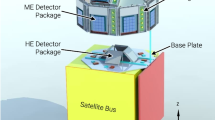Abstract
The early days of radio astronomy showed incredibly diverse experimentation in ways to sample the electromagnetic spectrum at radio wavelengths. In addition to obtaining adequate sensitivity by building large collection areas, a primary goal also was to achieve sufficient angular resolution to localize radio sources for multi-wavelength identification. This led to many creative designs and the invention of aperture synthesis and VLBI. Some of the basic telescope types remain to the present day, now implemented across the entire radio spectrum from wavelengths of tens of meters to submillimeter wavelengths. In recent years, as always, there is still the drive for greater sensitivity but a primary goal is now to achieve very large fields of view to complement high resolution and frequency coverage, leading to a new phase of experimentation. This is the “back to the future” aspect of current research and development for next-generation radio telescopes. In this paper I summarize the scientific motivations for development of new technology and telescopes since about 1990 and going forward for the next decade and longer. Relevant elements include highly optimized telescope optics and feed antenna designs, innovative fabrication methods for large reflectors and dipole arrays, digital implementations, and hardware vs. software processing. The emphasis will be on meter and centimeter wavelength telescopes but I include a brief discussion of millimeter wavelengths to put the longer wavelength enterprises into perspective. I do not discuss submillimeter wavelengths because they are covered in other papers.

Similar content being viewed by others
Notes
I.e. photons, baryonic cosmic rays, neutrinos and gravitational waves. The future may include astronomy that uses dark matter particles as well.
Note that alternatives to a cosmological constant include modification of the theory of gravity that underlies cosmological expansion or the presence of another constituent that alters the dynamics of the universe.
This is equivalent to the solid angle covered by a CCD with the same number of pixels, each described by the point-spread function of the aperture.
An example of a frequency-time signature relevant to bursts with times ≲ 1 sec is the plasma-dispersion effect, which causes lower-frequency components to arrive later, a phenomenon well known from pulsar observations.
ALMA web site: http://www.almaobservatory.org
SKA web site: http://www.skatelescope.org
References
Rogers, A.E.E., et al.: Deuterium abundance in the interstellar gas of the galactic anticenter from the 327 MHz line. Astrophys. J. Lett. 630, L41 (2005)
Hinshaw, G., et al.: Five-year Wilkinson Microwave Anisotropy Probe (WMAP) observations: data processing, sky maps, and basic results. Astrophys. J. Suppl. 180, 225–245 (2009)
Braatz, J.A., Reid, M.J., Greenhill, L.J., Condon, J.J., Lo, K.Y., Henkel, C., Gugliucci, N.E., Hao, L.: Investigating dark energy with observations of H_2O megamasers. In: Bridle, A.H, Condon, J.J., Hunt, G.C. (eds.) Frontiers of Astrophysics: A Celebration of NRAO’s 50th Anniversary. Astronomy Society of the Pacific Conference Series, vol. 395. Astronomy Society of the Pacific, San Francisco (2008)
Kramer, M., et al.: Tests of general relativity from timing the double pulsar. Science 314, 97–102 (2006)
Foster, R.S., Backer, D.C.: Constructing a pulsar timing array. Astrophys. J. 361, 300 (1990)
Jenet, F.A., et al.: Upper bounds on the low-frequency stochastic gravitational wave background from pulsar timing observations: current limits and future prospects. Astrophys. J. 653, 1571 (2006)
Loeb, A., Zaldarriaga, M.: Eavesdropping on radio broadcasts from galactic civilizations with upcoming observatories for redshifted 21 cm radiation. J. Cosmology Astropart. Phys. 1, 20 (2007)
Harwit, M.A.: Cosmic Discovery: The Search, Scope and Heritage of Astronomy. Basic Books, New York (1981)
Cordes, J.M.: Axes of discovery: the time domain and the radio synoptic survey telescope. In: Bridle, A.H., Condon, J.J., Hunt, G.C. (eds.) Frontiers of Astrophysics: A Celebration of NRAO’s 50th Anniversary. Astronomy Society of the Pacific Conference Series, vol. 395, p. 225. Astronomy Society of the Pacific, San Francisco (2008)
Condon, J.J.: Deep radio surveys. In: Afonso, J., Ferguson, H.C., Mobasher, B., Norris, R. (eds.) Deepest Astronomical Surveys. Astronomy Society of the Pacific Conference Series, vol. 380, p. 189. Astronomy Society of the Pacific, San Francisco (2007)
Hankins, T.H., Eilek, J.A.: Radio emission signatures in the crab pulsar. Astrophys. J. 670, 693 (2007)
Rees, M.J.: A better way of searching for black-hole explosions. Nature 266, 333 (1977)
Acknowledgements
I thank the organizers for putting together a stimulating program that both celebrated the invention of the telescope and its first astronomical use by Galileo and also looked toward the future. For useful conversations I thank Woody Sullivan and my colleagues in the National Astronomy and Ionosphere Center, the National Radio Astronomy Observatory, the U.S. SKA Consortium, and the SKA Program Development Office. This work was supported in part by a grant from the National Science Foundation to Cornell University.
Author information
Authors and Affiliations
Corresponding author
Rights and permissions
About this article
Cite this article
Cordes, J.M. Back to the future: science and technology directions for radio telescopes of the twenty-first century. Exp Astron 26, 79–94 (2009). https://doi.org/10.1007/s10686-009-9167-4
Received:
Accepted:
Published:
Issue Date:
DOI: https://doi.org/10.1007/s10686-009-9167-4




